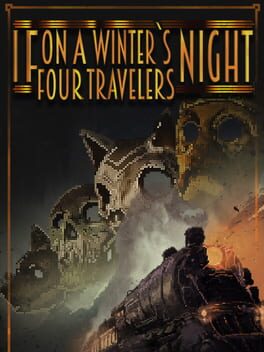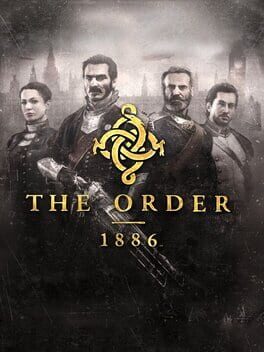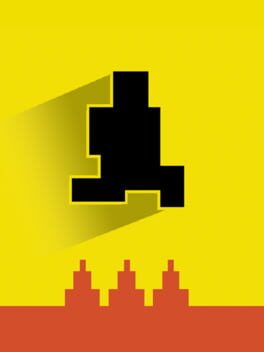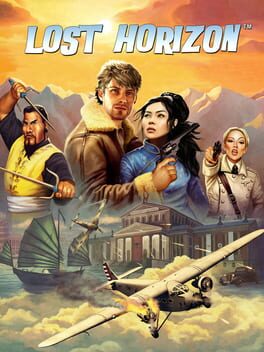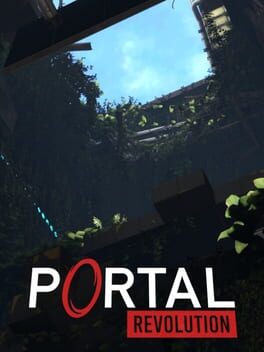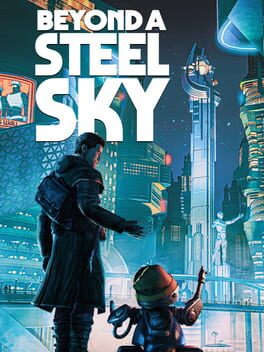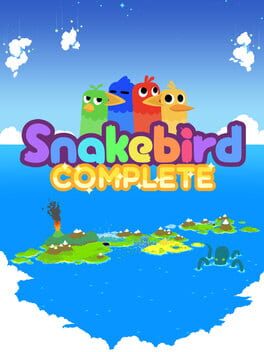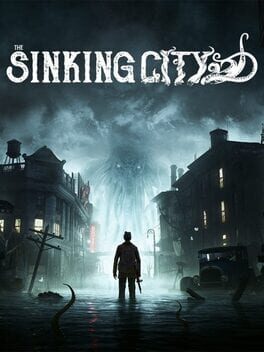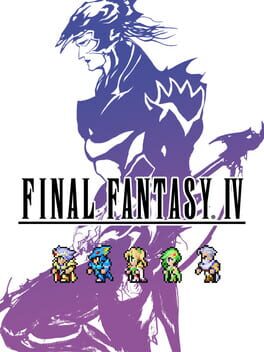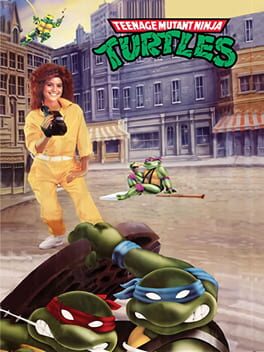It's incredible that the game doesn't cost a single cent. Sure, If On A Winter's Night, Four Travelers is short without much in the way of gameplay, you mostly just run through hotspots without much puzzles or dialogues. But where the game makes up for everything is the fantastic presentation which, despite the reduced pixel visuals, knows how to inspire and the sensational atmosphere which draws you further under its spell from act to act. Whether you are trudging through a rainy, dark mansion or through the labyrinthine corridors of a library. The gloomy atmosphere drips from every corner, supported by a fantastic soundtrack. You almost feel like you're diving into Poe or Lovecraft short stories. And I'm very excited to see what else the developer Dead Idle Games has in store for us.
2015
The Order: 1886 is both a game that has been unjustly lost under the radar of many players but also a forgettable, mediocre game without much gameplay value. How is that possible? On the one hand, there is an incredibly interesting and atmospherically designed game world in 19th century London. The slums are filthy, the noble classes live in nicely decorated mansions and Jack the Ripper roams the nights. In this world, which is also accompanied by a fantastic underlying soundtrack reminiscent of Bloodborne, we play Daniel Day Lewis, I mean Sir Galahad, a member of a secret order that has dedicated itself to the fight against half-breeds for centuries. Thrown into the mix is a dash of steampunk, real-life locations and personalities such as Nikola Tesla and a bit of Arthurian legend. Yes, The Order is not lacking in interesting content. Instead, the gameplay is lacking in all areas. The game is a mix between a mediocre cover shooter and passages that are almost reminiscent of Walking Simulator in which we almost stroll through rooms and corridors. Often the camera is glued to our shoulder. Then there are little mini-games such as picking locks or hotwiring circuits and a very rudimentary sneak level, which was a bit of a pain in the arse, as you're immediately dead if you're discovered. Oh and quicktime events, because who doesn't love quicktime events? The shootouts offer the best gameplay. The weapons, however, are relatively normal genre standards. But in addition to pistols, revolvers, rifles and submachine guns, there is also the atypical Thermite Rifle, which shoots flammable magnesium. Apart from 1-2 arenas in which enemies with shotguns (two shots and you're dead) and thermite rifle carriers are thrown at you in the smallest of spaces, the shooter sections are not too difficult and are easy to handle. But it doesn't really do anything special. The story, which is the real highlight of the game, is also very slow to get going, then brings up some twists and aha moments, but still leaves out many points that would have been really interesting for understanding and further worldbuilding. And then the game simply stops at a climax. The Order: 1886 therefore lags far behind its competitors in terms of gameplay, but thanks to its fantastic, albeit not fully utilised potential, setting, it manages to leave many wanting more. More London, more of the secret order, of monsters and myths. Because that's what makes the game stand out. Maybe we'll get a predecessor at some point which, in addition to a well-rounded story, also focuses on fun gameplay. I, at least, would love to wander the streets and underworld of London with Sir Galahad again.
Disco Elysium is a fantastic, nihilistic, depressive but also encouraging role-playing game that completely avoids classic combat and draws you deep into a familiar yet unknown world. It draws heavily on real customs, countries, languages and even racial stereotypes but wraps it all up in new names and places. In most cases, this creates the pleasant strangeness of an uncertain fantasy world. Occasionally, however, the flood of unknown nations, names and ideas in never-ending dialogues can be quite exhausting. And while we're at it: There is a lot of talking. I mean a loooooot of talking. So if you're mainly looking for action, you're definitely in the wrong place. With The Final Cut version, however, the game now also has a superb voiceover, so we no longer have to read pages and pages of dialogue. The dubbing is one of the best I have ever heard in a video game. Especially the inner voice of our protagonist alone would be award-winning in my opinion. But in general, all the voice actors and actresses do an excellent job of portraying the incredibly diverse and varied cast. From the grumpy barman to the sly chairman, old truck driver lady or a bratty child. Listening to them is usually fun, even if the content sometimes varies. There were times when I thought to myself "Come on, get on with it" and read faster than the character spoke in order to click next. Compared to the game as a whole, however, this was a rarity. The dialogues, like the voice acting, are of an incredibly good quality. It's just a pity that the dialogue tree has a small shortcoming, namely that higher-level selections remain "greyed out" even though a new option underneath has been unlocked through new discoveries. But what is Disco Elysium actually about? We are a party animal of a detective who should be investigating a murder but has lost his memory. A role-playing game couldn't start in a more clichéd way. But the development of this party animal draws you in so much, makes you feel excited, make supposedly good decisions, make "Now more than ever!" decisions and want to know more and more about who we actually were, are and could become. And the run-down town of Revachol doesn't make it easy. Fortunately, we get the sympathetic detective Kim Kitsuragi from another Precinct to help us with advice and support. In my opinion, the chemistry between these two alone makes the game worth playing. The gameplay consists mainly of dialogues, gathering information for further dialogues and... Dice rolls. And oh boy... I got strong X-Com flashbacks here. Because at least in my playthrough, I completely messed up a lot of >70 rolls. Fortunately, there don't seem to be any soft locks in Disco Elysium and even if a failed dice roll hurts for a moment, it still advances the story. And that's exactly what makes the game so charming because we do our best and live with the consequences. Here I would strongly advise you not to save scum because that defeats the purpose of the game. And this theme of "it is what it is" runs through the whole game with its depressive undertone. We chat our way through the districts of Revachol (with a semi-successful fast-travelling system that forces us to go to one of three points before jumping to another), learn more about the world, the murder, the parties in the city and ourselves level up our skills and listen to the fantastic soundtrack. Which is also great and emphasises the game with its melancholic and sombre tones (except for that damn tent in which I couldn't hear myself think!). I can only advise you not to get too attached to the murder case. Because this is basically just the hook for the game. I made the mistake of finding the end of the game very disappointing. It's better to accept the long journey of self-discovery, self-knowledge and healing. That way, this almost masterpiece of an RPG is completely open to you.
2023
Level Devil is a neat little browser game to enjoy for about 40-60 minutes. What's great about it is not the graphics or even the level design because both are rudimentary. A black little guy, mostly the same coloury backgrounds and everything is blocky and pixely. In fact, Level Devil reminds me a lot of "This is the Only Level". The logic of the game changes constantly making you rethink as quickly as possible. Sometimes you jump high, sometimes you are slow, sometimes you ARE the goal. Unfortunately, there are a lot of Kaizo Mario style mean tricks played on you like disappearing grounds or suddenly appearing spikes. Most of the time you simply cannot react fast enough forcing you to start again. Because of the bite-sized levels, the frustration doesn't get all too high (but it's there). But it is free, it is short and if you are a fan of this style of game then what are you waiting for?
2010
After Animation Arts proved with the great Secret Files series that they are in no way inferior to the great developers of the 90s when it comes to globe-trotting point-and-click adventures, they have taken the final step towards Indiana Jones with Lost Horizon. The setting literally cries out for it with the period of the Third Reich, including Nazis and locations like Hong Kong, Morocco, Germany and Tibet. Many scenes and story beats could have come from an Indy film or game in one way or another. However, Lost Horizon never seems like a blunt copycat but takes the excellent original as its inspiration. We travel across the world to stay one step ahead of the Nazis and protect the powerful artefact from them. Whereas the wonderfully designed backgrounds shine, the character models appear somewhat stiff and clumsy. And in most cases, the drawn portraits that appear during dialogues don't really match the character models. But for a point-and-click game, that's really complaining on a high level because ultimately it's all about the story and the puzzles. The latter are mostly standard fare (although there are a few exceptions that are slightly out of line). But in the end, Animation Arts freshens up the game with a gameplay twist that I don't want to spoil here. Lost Horizon is definitely a game for point-and-click fans, Indy enthusiasts and adventure seekers.
2021
After the very good Final Fantasy IV, which is currently my favourite part of the Classic era (part 6 is still on my To-Play-list), I was quite disappointed with the sequel. Even though the main characters in Final Fantasy V are no longer blank slates like in the early games, they seem rather flat in comparison to Cecil, Kain, Rydia, Rosa and the rest. Despite their relationships, there is never any real chemistry between the characters. The story about a shattered world, war and, for the first time, exploitation by humans is really neat. But even if that doesn't quite reach the level of the story in part four, it's still really good. What Final Fantasy V does really well is the revised job system. This time we can change jobs at any time, level them up and the clever thing is that we can still use the skills we have mastered in a job even if we are assigned a different main job. For example, we can let Lenna practise some white magic first and then let her become a dragoon later, but still let her heal alongside Jump. This makes the set and skills we have at hand incredibly dynamic and allows us to switch skills from time to time to face a dungeon or a special boss with a different tactic. The combat is almost identical to its predecessor and once again utilises the ATB system with all its strengths and weaknesses. I'm still not a fan, as it sometimes makes battles unnecessarily hectic so that you avoid giving your opponent a devastating attack. And again, game number 5 has a problem with bosses that wipe the floor with you out of nowhere. It's fine if an opponent is challenging, but if you can barely react because he's attacking your entire team as a counter with four-digit points of damage, it's annoying. There is often a tactic (don't attack with a certain element because it triggers a strong attack or attack everyone at the same time, etc.) but you usually only find out in the fight with 20% HP remaining. If you're lucky, you'll manage to heal up again and memorise the gimmick. The last bosses in particular are a real struggle, as is typical of the genre, and to be honest this was the first time I had to grind. On the other hand, the dungeons are once again wonderfully and variedly designed and also have occasional puzzles. The story is okay to good and after the pacing gets out of hand around the halfway point, the last third in particular manages to add a lot of tension and urgency with huge stakes after a fateful twist. Final Fantasy V is still a good game, but in my opinion, it's the weakest of the SNES era so far. And as far as I've heard about the sixth game, it will remain so. But I stay curious until then.
2024
Every once in a while a new portal mod sees the light of day. A mod that not only provides new test chambers, but also continues the lore and the world around the Aperture Science Enrichment Center in a logical and interesting way. And Revolution is exactly that. The bottom line is that it's more Portal. Weighted Companion Cubes, Gels, Lasers etc. But the team at Second Face Software has even added new features such as temporarily switching off the power to deactivate disintegration grids, gel cleansing fields and more. And just like in the original game, they manage to change and vary the components and puzzles every time a chamber type feels worn out. This creates a balanced pacing which is freshened up by paths away from the test chambers. The ASEC is fantastically designed from crumbling areas to the depths of the salt mine. The characters could also be straight out of an official Valve game with their charm and dorkiness. Kudos go above all to the voice acting, which is sensational for a mod. The puzzles have this great challenging sweet spot where you have to briefly realise the situation and which components you have to play with, but the game never gets really difficult. It takes about five hours to get through in a weekend. And I can only recommend it to all Portal fans.
2020
Never would I have thought that Beneath a Steel Sky would get a sequel. Therefore, I was quite enthusiastic and had high expectations. After all, in 1993 "Beneath" offered one of the most interesting worlds of the 90s. So here's a chance to return to a social dystopia with citizen classes, wacky shops and virtual worlds? Count me in! Unfortunately, the second instalment is a bit toned down in terms of atmosphere and setting. Sure, we roam Union City again, but unfortunately, it looks rather mediocre most of the time and with little variation. Nevertheless, the technical aspects are fantastic and I would like other developers to take a leaf out of this hybrid of third-person and point-and-click. Rarely have I seen such a good modernisation of a genre. Unfortunately, the story is outdated in comparison. It feels like we spend half the game chasing after a MacGuffin to which Foster may have an emotional connection, but we as players have none. We keep getting caught up in what feels like endless dialogues that seem to go around in circles forever. This doesn't just annoy us but also makes Robert look pretty stupid. A picture of a fool that I couldn't really get rid of until the end. The puzzles, on the other hand, are standard with combinations, although there is also a little twist here with a hacking device. This allows us to swap configurations of advertising boards, robots and other devices so that, for example, a button opens a door when you are not authorised instead of triggering an alarm. However, this is rarely challenging, unless the places to be hacked are stupidly placed. After about an hour, the story picks up a bit and builds up some tension again, although the game only manages to build up a mystery around the city until about an hour before the credits, which is then solved faster than you can shout EX-TER-MIN-ATE. Beyond a Steel Sky is quite fun, because the game can excite with the one or other narrative of this megacity, but unfortunately doesn't manage to build up enough depth and follow in the footsteps of its direct predecessor.
2023
Snakebird is a lovely little puzzle game that is easy to pick up but gradually wants you to think ahead. The goal is quite simple: Eat all fruit. Get to the exit. But gravity and confined spaces are your enemy. Can you make that long gap in the floor without falling? Do you need to get longer? How can I reach that fruit to get longer? Later there are different stages underwater and on a snowy hill which throw new mechanics at you that challenge your brain. Everything is wrapped in cutesy, colourful visuals. I especially love how the Snakebirds look with a hungry gaze when fruits is nearby or scared when they're just above some spikes. This game is full of charm, character and brain teasers.
2023
Super Mario RPG is a wonderful little game that brings a few new improvements to the 1996 original. First and foremost, of course, the audio-visual design. The game appears in the Unity Engine in a wonderfully cute 3D style that remains true to the original. The characters are small, charming and cuddly. You can't even really be angry with Bowser in this game. The entire locations also have a great miniature cut-out charm, which would only have been missing a tilt-shift effect. Small huts and houses adorn the villages. Dungeons and forests are wonderfully designed and invite you to explore. I always found the water pools in particular very nice to look at because of the cross-section. However, I would like to know what Nintendo was thinking with the character design of the Smithy Gang. From boss fight to boss fight they get more and more random and jumbled up. Yet they start with enemies such as swords or bows with an interesting premise. Mario, Peach and Bowser are joined by two newcomers, Geno and Mallow, who are in no way inferior to the original trio. Each of the five has their own cute attack animations which also differ from weapon to weapon. Sometimes Mario kicks a Koopa shell towards his enemies, sometimes he strikes with his newly acquired gloves. And that also brings us to the fight.
These are rarely challenging and don't require any real tactics. In most cases, it is enough to use the standard attacks of our fighters. To maximise the damage you should make sure you press the A button a second time at the right moment during the attack. We can also use this feature to block enemy attacks to avoid damage completely. However, this time window is often so short that you are usually hit by the first attack, but have often internalised the pattern or attack animation by the second time. In addition to the regular attacks, there are also abilities that consume flower points (mana, so to speak). I mostly used these for healing or when there were a lot of enemies to deal damage simultaneously. The special attacks rarely do more damage, which is why I mostly attacked individual enemies standard stuff. The newly introduced triple moves, which could perhaps be compared to the summons of the Final Fantasy series (after all, Super Mario RPG was originally developed by Square), do all the more damage. With every attack and block, a gauge fills up and at 100% it starts. These attacks get initiated by awesome-looking cutscenes including your active trio. The damage, effect or, affected enemies vary from your current line-up. For example with Bowser, Geno and Mario, our favourite King Koopa throws the two up in the air, there Mario forces Geno forward and the latter starts bombarding the battlefields with shooting stars. When selected, Mario, Mallow and Peach, the mushroom kingdom citizens send energy to Mallow which casts a healing rainbow.
Then of course there are the items, but I mostly used healing objects and resurrection. There is also a small selection of items which affect enemies or cause damage. In addition, there are equipable accessories, clothes and, as already mentioned, weapons. Where the accessories usually bring an effect in addition to stat improvements, such as protection against transformations, clothes only bring improvements in defence and unfortunately do not offer any visual changes to the characters.
Unfortunately, the game is not without its problems. The hidden chests are just a nuisance and instead of looking for them you eventually start jumping wildly across the map. The music has also been given a fantastic overhaul, but in about 90% of all battles, the same silly music plays, which at some point got on my nerves. It wasn't particularly frequent, but often enough to be noticeable.
And just between you and me, the shallow story doesn't necessarily win any awards, but you know what that's okay. Super Mario RPG is a Mario game that lives by its atmosphere. The music tempts you to whistle along, every new map is a cute little diorama. The characters you meet are funny, cute and whacky. And that's exactly how you tumble through the game play by play without much hindrance and a huge grin on your face most of the time.
These are rarely challenging and don't require any real tactics. In most cases, it is enough to use the standard attacks of our fighters. To maximise the damage you should make sure you press the A button a second time at the right moment during the attack. We can also use this feature to block enemy attacks to avoid damage completely. However, this time window is often so short that you are usually hit by the first attack, but have often internalised the pattern or attack animation by the second time. In addition to the regular attacks, there are also abilities that consume flower points (mana, so to speak). I mostly used these for healing or when there were a lot of enemies to deal damage simultaneously. The special attacks rarely do more damage, which is why I mostly attacked individual enemies standard stuff. The newly introduced triple moves, which could perhaps be compared to the summons of the Final Fantasy series (after all, Super Mario RPG was originally developed by Square), do all the more damage. With every attack and block, a gauge fills up and at 100% it starts. These attacks get initiated by awesome-looking cutscenes including your active trio. The damage, effect or, affected enemies vary from your current line-up. For example with Bowser, Geno and Mario, our favourite King Koopa throws the two up in the air, there Mario forces Geno forward and the latter starts bombarding the battlefields with shooting stars. When selected, Mario, Mallow and Peach, the mushroom kingdom citizens send energy to Mallow which casts a healing rainbow.
Then of course there are the items, but I mostly used healing objects and resurrection. There is also a small selection of items which affect enemies or cause damage. In addition, there are equipable accessories, clothes and, as already mentioned, weapons. Where the accessories usually bring an effect in addition to stat improvements, such as protection against transformations, clothes only bring improvements in defence and unfortunately do not offer any visual changes to the characters.
Unfortunately, the game is not without its problems. The hidden chests are just a nuisance and instead of looking for them you eventually start jumping wildly across the map. The music has also been given a fantastic overhaul, but in about 90% of all battles, the same silly music plays, which at some point got on my nerves. It wasn't particularly frequent, but often enough to be noticeable.
And just between you and me, the shallow story doesn't necessarily win any awards, but you know what that's okay. Super Mario RPG is a Mario game that lives by its atmosphere. The music tempts you to whistle along, every new map is a cute little diorama. The characters you meet are funny, cute and whacky. And that's exactly how you tumble through the game play by play without much hindrance and a huge grin on your face most of the time.
2019
Pico Park is one of those little co-op gems that flies under the radar for many. And at just under 4 euros, it's in the perfect price range for a small group to say together: Yes, let's all buy this. And you won't regret it. We "only" played it with three people and even then it was pure chaos. Here are a few quotes:
"Wait, wait, WAIT!"
"God da**it!"
"COULD YOU JUST LISTEN TO ME ONCE?"
"Oh boy..."
"PLEASE... STOP... JUMPING!!!"
"Ok, ready? All at once...... ok i quit..."
"OK one last time." (It wasn't the last time)
Sure, calling the audiovisual design rudimentary would certainly be an exaggeration, but the game does what it sets out to do and builds many small levels that require some brain power, hand-eye coordination or... sigh... communication.
Much worse, the game can be blamed for the fact that the netcode has its problems so we weren't completely synchronised at times. In most cases, this wasn't a problem, but there are 1-2 levels where you almost have to be pixel-precise.
Nevertheless, for the small price, we really had two and a half hours of fun but also frustration! (I don't even want to know how it goes with eight people)
"Wait, wait, WAIT!"
"God da**it!"
"COULD YOU JUST LISTEN TO ME ONCE?"
"Oh boy..."
"PLEASE... STOP... JUMPING!!!"
"Ok, ready? All at once...... ok i quit..."
"OK one last time." (It wasn't the last time)
Sure, calling the audiovisual design rudimentary would certainly be an exaggeration, but the game does what it sets out to do and builds many small levels that require some brain power, hand-eye coordination or... sigh... communication.
Much worse, the game can be blamed for the fact that the netcode has its problems so we weren't completely synchronised at times. In most cases, this wasn't a problem, but there are 1-2 levels where you almost have to be pixel-precise.
Nevertheless, for the small price, we really had two and a half hours of fun but also frustration! (I don't even want to know how it goes with eight people)
2019
The Sinking City is definitely a game for Lovecraft fans (maybe for some fans of investigative games like the Sherlock games). I would think that others might ditch this because the graphics are okay, it's not programmed properly, the shooting is a joke and the core gameplay is super rudimentary. So why should someone play this? The answer is atmosphere. Over the small fishing town of Oakmont hangs this incredibly rainy dread. Homeless people, Innsmouth refugees and scattered religious fanatics roam the streets. Most of the streets are flooded and only passable by small boats. Street signs and shop names are reminiscent of many well-known stories from the Cthulhu Mythos. This drew me in so deeply that at some point I didn't care that many places look similar and that many of the houses that can be entered are simple copies. Even if you know some Lovecraft stories or have played games, the story of Charles Reed is still exciting. Reed is called to Oakmont in dark nightmares and begins his work there by searching for the son of a well-known family who disappeared in the town after an expedition on the high seas. Over the course of about twenty hours, we now set out to solve the mystery and also solve some side quests, which have even more Easter Eggs and references to Lovecraftian stories. We progress through the game by talking, deduction and shooting. The main gameplay is solving puzzles and putting together jigsaw pieces of information. In this way, you always come to a place where something important is happening. Thanks to a gift from Reed, he can see fragments of the events and you have to put them in the right order to understand what has happened here. Within a chapter, you collect several of these insights and have to put them together in a meaningful way to find out motives, approaches and locations. Again and again, you have to refer to the city's archives. Mostly to track someone down. For example, Charles receives information about a crime and have to use clues (district, people, section, period) in the police records to find the criminal's accommodation. So we puzzle our way from place to place to get more information. This is never really difficult - this sequence of events in particular is usually simple from one corner of the room straight to the other - but putting the information together sometimes ends in trial and error due to poor wording. As a filler between these moments, moving around the city and combat serve their purpose. However, the latter should be seen as more than just a nice addition. The shootouts are never challenging, visually impressive, and the gunplay feels impactless and vague. Despite the standard arsenal including a revolver, shotgun, machine gun, and more, it could have had potential. On the side, we craft grenades, Molotov cocktails, and spring traps to counter the monsters. For this, we diligently loot all marked crates, shelves, and trash cans to craft additional ammunition and healing items for health and sanity points. Although each fight earns us experience points, which we can use in several small skill trees to, for example, strike faster, carry more ammunition, or deal more damage, these points are easily obtained throughout the storyline by completing quests, thus allowing you to avoid random fights. Another potential disappointment might be the just-about-okay technical state of the game. Effort seems lacking in many areas or the game appears to have been rushed to market. For instance, when boarding the boat for the flooded streets, the transition lacks animation, the characters just plibs onto the boat; opponents are sometimes thrown around in a ragdoll-like manner, and in cutscenes, Charles always wears his standard outfit instead of the unlockable clothing. Navigating through menus is also not well thought out and is cumbersome. Instead of simply being able to go back a menu with a right-click, one must press the displayed key, such as Escape. It's not even possible to go back by left-clicking the word. A better, cohesive gameplay experience could have significantly enhanced the credibility of the atmosphere. These are indeed numerous issues that could certainly deter players, and rightfully so. However, somehow, The Sinking City manages to be appealing as a whole. We delve deeper into the Lovecraftian rabbit hole, discovering more about the fate of the city and Reed with each step. Every side quest exposes us to darker moments, and the journey through the city consistently indicates that something is amiss. Yes, I believe as a Lovecraft fan, one can't go wrong here.
However, what the folks at Frogwares definitely failed to achieve is a satisfying ending. None of the three endings manages to do justice to how players have behaved throughout the game—they're freely selectable, abrupt, and bluntly concluded. Hence, it's better to cherish the main gameplay instead.
However, what the folks at Frogwares definitely failed to achieve is a satisfying ending. None of the three endings manages to do justice to how players have behaved throughout the game—they're freely selectable, abrupt, and bluntly concluded. Hence, it's better to cherish the main gameplay instead.
2021
Final Fantasy IV is the first game in the series to make great progress with the leap to a new generation of consoles. You notice this right from the start when you are greeted by a lengthy in-game cutscene instead of a text crawl. This sets the mood wonderfully. And that is important because until this game the world and the characters had never had so much depth. Something which Squaresoft will continue to refine and perfect. Friends become enemies, short travelling companions grow on you and more twists decorate the exciting path from the captain of an air force unit to the saviour of the blue planet. And here in the fourth part of the series, it is Sakaguchi who begins throwing the fate of characters in our faces. Everyone remembers that one scene from Final Fantasy VII, but three games prior you shouldn't get too attached either. Another revolutionary change is the introduction of Active Time Battle, which should bring more tension and urgency to the battles. And they are not wrong. However, I think that with many characters, especially when they can attack in a close time frame, it brings much more stress than tension. Even with the option to set ATB to Wait, it only pauses when selecting spells and items, but not when a character has filled his bar. Otherwise, the battles play out quite similarly to before. We are surprised by a group of monsters and we have to kill them before we die. But wait: This time there are some encounters that actually require tactics instead of just attacking and healing. There are boss fights with clear patterns like enemies casting Reflect on friends or bosses tanking. This doesn't get particularly deep but it's a welcome change from mostly auto-battling. Level up continues to be character based and spells use MP instead of slots. The locations and dungeons are wonderfully designed, sometimes with parallax backgrounds and finally no longer have that pipe-like design. It's really fun to fight your way through the areas, some of which have dangerous floors. And then there is a twist or two as far as the world map is concerned. In general, the game manages to give the impression of a living world with an ongoing story. The world does not only exist during the playthrough. Yes, Final Fantasy IV is a true masterpiece, but it doesn't come without a few flaws this time either. After some imperfections already noted, part four also fails to create an exciting boss fight. Again, it only uses powerful attacks and we try to finish it off before we are dead. In addition, there is grinding to expand the sufficient HP and MP pool and a long introduction to the fight that is repeated after every wipe. Ugh... And the boss doesn't look interesting this time either. Even though I found the last fight incredibly annoying, it's the way to get there that is once again exciting. The story around each of our characters, twists, love affairs and betrayals is too entertaining for that. So once again, it's the world and the characters that make a Final Fantasy game stand out and become a truly great game.
If you like Doom and Indiana Jones then this is definitely a mod for you. Venturous combines the fast, action-paced, strafe and gun gameplay of your typical boomer shooters with locations and enemies that could have jumped right out of The Mummy or Indy movies. You fight your way through hordes of filthy nazis, noble Medjais, mummies and other otherworldly creatures. The levels are huge and give you that great sense of vast catacombs, sandy ruins and long-forgotten cities in which you get lost easily. Fortunately, there is your typical auto-map which even shows coloured doors. The maps could be very dark at times but here comes your trusty torch into play. Too bad that you can only use it with your revolver so when you're out of ammunition you constantly have to swap between light and shooting. But swapping for different weapons is totally worth it. You got your normal set of weapons like shotguns, your trusty MP40, carabiners and more but the developer has thrown in special weapons like a pulse rifle and an energy shooting blade. The game only makes a few mistakes and that is some bullet-spongy but not difficult enemies including the few bosses, the aforementioned almost pitch-black sections and... why was it over so fast?! I need more levels! Pixelfox, please! I am longing for this kind of adventure games!
This 1989 classic is made for the arcade halls and it shows. It looks gorgeous, is full of details and the soundtrack kicks ass. But this machine is made for devouring your hard-earned quarters and the game plays accordingly. Even the regular foot soldiers are a severe threat either because the game throws many of them in your way or because the hit detection is pretty wobbly. In fact, the whole game feels imprecise. It doesn't feel like you are hitting an enemy. There is no real impact. Also, it feels like you have to be right in front of them but they can hit you slightly above or below you. And then most of them hit back without a real pattern that you can learn and anticipate. Same for the stage bosses. They look cool and just like in the SNES and Genesis games have a lot of charm. But you never really know how to get out of combat because they will throw a punch or a kick at you. At least the enemy throwing looks so satisfying. But also here I am missing a certain noticeable punch to it. The regular enemies and stages look awesome too but it misses the variety of Turtles in time. The fun of the game here comes entirely from the design and style of the Ninja Turtles setting. There are rarely any real tactics due to the spongy hit detection. If you want more beat 'em up turtle action, take a look here. Fortunately, with MAME you don't need real quarters any more. Also, I bet it is a lot more fun when you play with friends.
